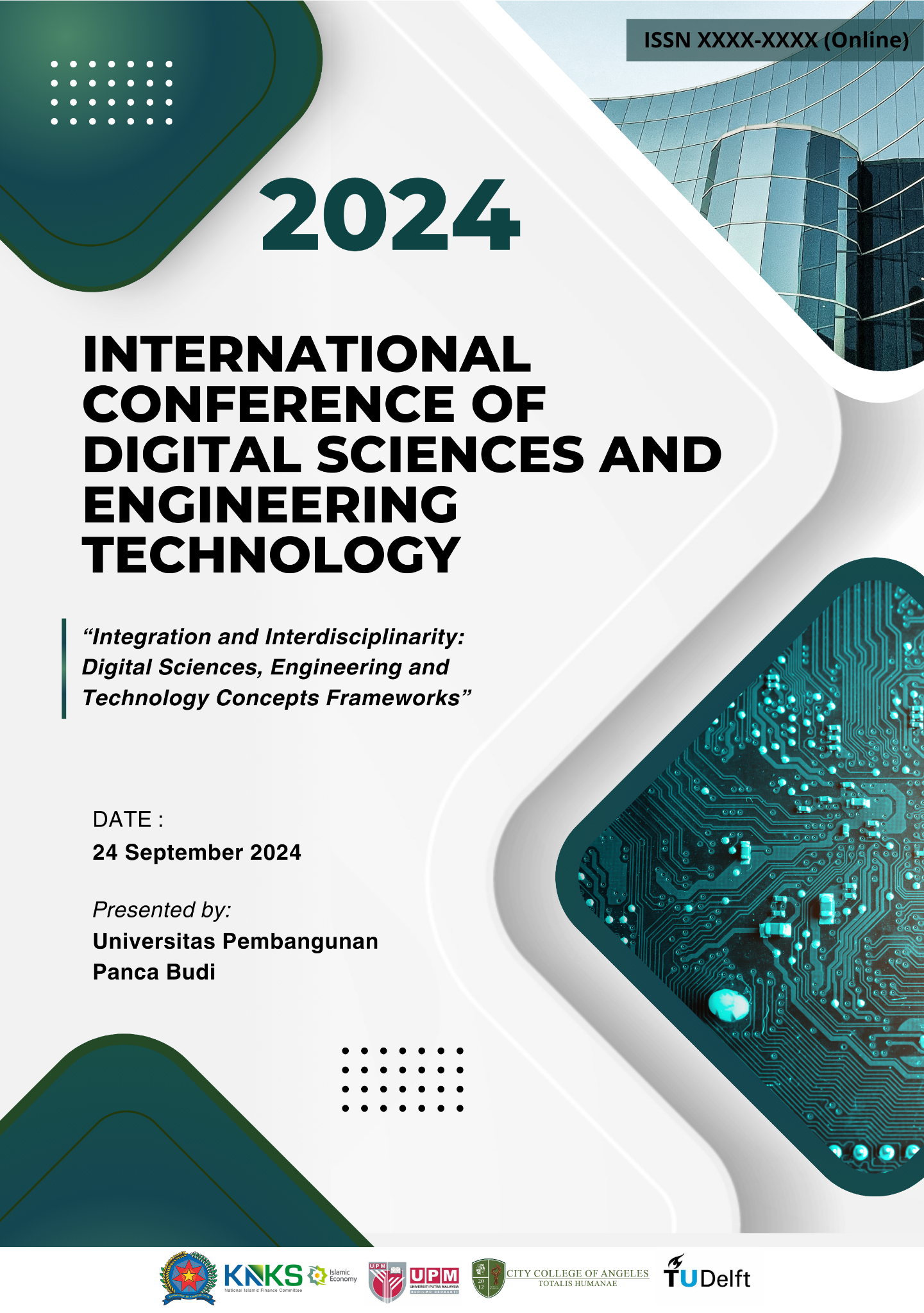Analysis of DC-DC Boost Converter Output Voltage Based on Microcontroller
Keywords:
DC-DC Boost Converter, Microcontroller, PI Control, Output Voltage, Simulation, Tool Implementation.Abstract
This study aims to analyze the output voltage performance of a DC-DC boost converter circuit controlled by a microcontroller. This circuit uses a PI (Proportional-Integral) control technique to produce a stable and controlled output voltage despite variations in input voltage and load changes. In this study, computational simulations were carried out using Power Simulator software and hardware implementation with components such as the STM32F1038CT microcontroller, IR2110 driver, and IRFP460 switch. The DC voltage source used was 12V, with a 2 mH inductor, a 220 μF load capacitor, and a 100 Ohm load resistor. The simulation results and hardware implementation show that the output voltage can follow the reference voltage waveform accurately and reach a value twice the input voltage (around 44.8V). In addition, the system is proven to be stable despite variations in input voltage and load changes. The use of proper PI control allows for fast and effective output voltage adjustment. This study contributes to the development of an efficient power conversion system, which can be applied to various applications that require stable and accurate voltage boosting.
References
Hsieh, C. (2018). Design of proportional-integral (PI) controllers for DC-DC converters. IEEE Transactions on Power Electronics, 33(9), 1075-1082. https://doi.org/10.1109/TPEL.2017.2764659
Lee, K., & Park, J. (2017). Voltage doubling DC-DC converters for high efficiency power conversion. Journal of Power Electronics, 17(3), 305-314. https://doi.org/10.6113/JPE.2017.17.3.305
Liu, J., & Wang, Y. (2016). Application of DC-DC converters in renewable energy systems. Renewable and Sustainable Energy Reviews, 61, 435-447. https://doi.org/10.1016/j.rser.2016.03.039
Rashid, M. H. (2014). Power electronics: Circuits, devices, and applications (4th ed.). Pearson Education.
STMicroelectronics. (2020). STM32F103x8, STM32F103xB, STM32F103xC data sheet. Retrieved from https://www.st.com
STMicroelectronics. (2021). STM32F1038CT microcontroller, technical reference manual. Retrieved from https://www.st.com.
T.H. Lo, J. Teng & J. Huang, “Interleaved Voltage-Doubler Boost Converter for Power Factor Correction”, International Power Elerctronics Conference, IPEC-Niigata-ECEE Asia, pp.35283532, 2018.
B. Maharmi, “Perancangan Inverter Satu Fasa Lima Level Modifikasi Pulse Width Modulation”. Jurnal Teknologi Elektro, 8(1), hlm. 24-31, 2017.
S. Sau and B. G Fernandes, “Modular Multilevel Convrter Based Variable Speed Drive with Reduced Capacitor Ripple Voltage, IEEE Trans.Ind Electron, 66(5), pp.3412-3421, 2019.
F. Reza, M. Rizki, S. Riyadi, “SPWM Controlled Input in Dual Duck DC-DC Converter Full Bridge for Single Phase Five Level Inverter”, Jurnal Phus. Conference, 1444(1), 2020.
P. Kumari, R.K. Keshari & S. Banerjee, Design and Impelementation of photovoltaic module using multilevel inverter and boost converter, J.Eng. Technol, 4(11), pp.1064-1068, 2017.
T.-H. Lo, J. T eng, and B. J. Huang, “Interleaved Volt age -Doubler Boost Converter for Power Factor Correction,” in 2018 International Power Electronics Conference, IPEC-Niigata - ECCE Asia 2018, pp. 3528– 3532, 2018.
C. Mouliza, M. Vasya, R. S. Lubis, and M. Gapy, “Simulasi Filt er Aktif Cascaded Mult ilevel Inverter Untuk Meminimalisir Harmonisa Pada Mot or Induksi 3 Fasa,” J. Karya Ilm. Tek. Elektro, vol. 4, no. 3, pp. 19– 29, 2019.
S. Sau and B. G. Fernandes, “Modular Mult ilevel Convert er Based Variable Speed Drive wit h Reduced Capacit or Ripple Volt age,” IEEE Trans. Ind. Electron., vol. 66, no. 5, pp. 3412– 3421, 2019.
D. Van Vo, M. K. Nguyen, D. T Do, and Y. O. Choi, “A single-phase nine-level boost inverter,” Energies, vol. 12, no. 3, pp. 1–14, 2019.
Downloads
Published
How to Cite
Issue
Section
License
Copyright (c) 2024 Triswardana Ikhsan; Yoffi Andinata, Solly Aryza Lubis

This work is licensed under a Creative Commons Attribution-ShareAlike 4.0 International License.















